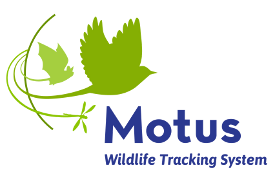Nature Counts
The NatureCounts platform allows users to collect, archive, interpret and access wildlife data to advance the understanding of bird populations across the Western Hemisphere.
The Motus Wildlife Tracking System (Motus) is an international collaborative research network that uses coordinated automated radio telemetry to facilitate research and education on the ecology and conservation of migratory animals.
When tracking wildlife with automated radio telemetry over vast distances, the challenge of deploying enough receivers to get detections grows exponentially. To remedy this, data can be shared between all researchers so that essentially everyone is sharing receivers. This greatly expands the potential for this technology, but it comes with the added responsibility of coordinating projects, detection data and metadata – that’s where Motus comes in.
The Motus Wildlife Tracking System is an international collaborative network of researchers that use automated radio telemetry to simultaneously track hundreds of individuals of numerous species of birds, bats, and insects. The system enables a community of researchers, educators, organizations, and citizens to undertake impactful research and education on the ecology and conservation of migratory animals. When compared to other technologies, automated radio telemetry currently allows researchers to track the smallest animals possible, with high temporal and geographic precision, over great distances.
The philosophy behind Motus is that we’re all working together. At its core, Motus is community science. A community of researchers around the world conducting research on animals that are tracked by a network of coordinated receiving stations. These stations are maintained by a community of researchers, organizations, non-profits, governments, and individuals. In order for this concept to work, the system requires a centralized database and management system that all participants use. Most importantly, in order for your tags to be detected on any other station in the network, or for other project tags to be detected elsewhere, projects, receivers and tags need to be registered with, and have data processed by Motus.
While any automated telemetry project can operate in isolation, operating as a Motus project combines the collective impact of local, regional, and even hemispheric projects into one massive collaborative effort that expands the scale and scope of everyone’s work and maximizes the use of scarce research dollars. It also makes data available and more useful for future projects, collaborative endeavors and large-scale meta analyses.
There is NO cost to register your project and receivers to the Motus network, contribute data from those receivers, and use the resources on the website. In order for transmitters to be detected by the network, they must be reregistered with Motus and are charged a nominal fee to support data processing and ongoing maintenance and development of the research software platform. See the collaboration policy and fee schedule for more information.
Motus Client Data API: This hosted web Application Programming Interface (API) is linked to the central Motus database, which serves as a backbone for much of the proposed data access and data visualizations functionalities for the hosted web platform, and can also be accessed by third party applications including the Motus R package. Link
Motus R Packages: This service handles data access, processing, summary and analysis through dedicated R packages operated by Motus users. Link
Motus SensorGnome Software: This service handles sensor operations, data collection and scheduling, and connectivity through a web interface hosted on the SensorGnome sensor, which is used by the Motus Wildlife Tracking System. Its main purpose is to detect radio signals from encoded tags attached to small animals, store and transmit the information to the main Motus database. Link
Motus Server Data API: This hosted service is used for internal communications between Motus servers (e.g. metadata registrations, internal data transfers). This API can also be used by equipment manufacturers collaborating with Motus (e.g. register tags or receivers metadata). Link
Motus Visualization API: The Motus Wildlife Tracking System (Motus) is a novel automated radio-telemetry system for tracking the local, regional and continental movements of animals such as birds, bats and insects. This hosted web service provides an access point to a variety of data outputs (and formats, such as JavaScript code, html outputs, multimedia files).
The collaborative nature of Motus relies on a certain level of transparency with respect to data. While basic project and tag summary information is made publicly available, researchers have the ability to customize data accessibility and keep their project and data private if necessary. See the collaboration policy for more information.

The NatureCounts platform allows users to collect, archive, interpret and access wildlife data to advance the understanding of bird populations across the Western Hemisphere.